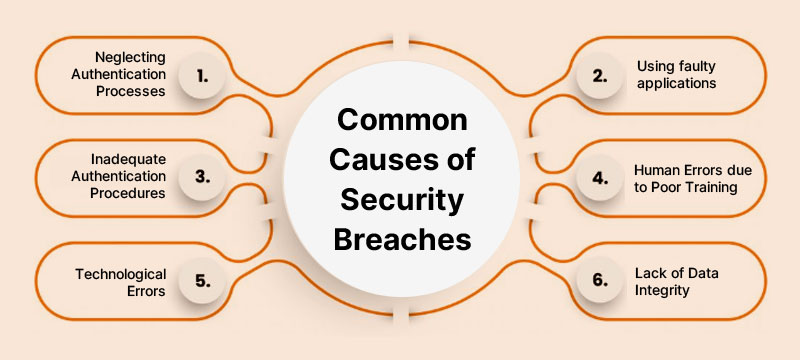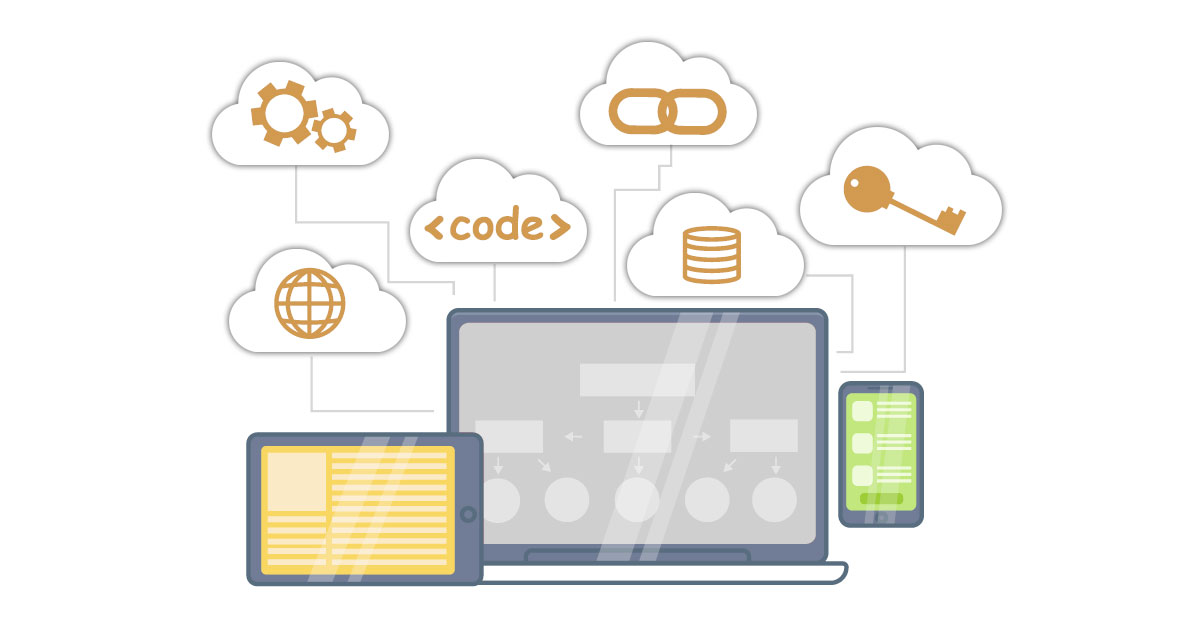GDPR, Data regulations, Senate hearings of Google & Facebook.
These are just a few of the recent incidents associated with security breaches. And these are just the cream of the scope of what encompasses the all-confounding world of cybersecurity.
Security breaches are on the rise these days, impacting organizational data and users’ privacy.
Therefore, it’s essential to identify the events that lead to data breaches.
Now, as a SaaS provider, implementing the best policies to combat data breaches and securing the client’s sensitive information should be your prime concern.
If you do not address the risk of data breaches, your clients and partners will not utilize your services.
Verizon’s investigative report reveals that 62 percent of the data breaches result from hacking and 81 percent from either stolen, weak, or default passwords.
So, let’s take a look at some of the most common causes that lead to security breaches and how to avoid them;
Common Causes of Security Breaches
We find that human errors, such as password attacks and social engineering, are the weakest link in every chain involving security.
Here are the 6 most common scenarios where-in a small mistake can lead to long-run ramifications;

1. Neglecting Authentication Processes
Compromised passwords are one of the leading causes of data breaches. In most scenarios, gaining access to a system can be quickly done through user credentials- one of the essential practices that attackers exploit.
The human tendency to prioritize convenience over security often leads to serious security breaches. Weak/default passwords are often considered low-hanging fruits and another ingress into secure systems.
One of the simplest methods to add a layer of protection is to various account usernames and passwords, yet usernames and passwords are frequently duplicated out of expediency.
Spend a little extra time making distinct login information for the benefit of both you and your customers. Depending on the value of the information you are safeguarding, make it a habit to change your credentials every 30 to 90 days.
2. Using Faulty Applications
Anytime one of your clients uses your service to enhance their web-based software, your database may be at risk. By leveraging your service, software that accidentally contains security flaws or system weaknesses exposes you to dangers. Even though the extent of these vulnerabilities varies depending on the application, it is bad practice to expose oneself to even the smallest hazard because it could lead to more significant problems in the future.
3. Inadequate Authentication Procedures
There are several different authentication procedures you can use. However, if you don’t use multi-factor authentication (MFA), you’re putting yourself at risk of failure. The value of MFA is found in the various authentication mechanisms you can choose from.
Every client will be unique, and each one’s authentication will be based on various criteria. Using MFA will allow you to tailor each authentication procedure to the user, leading to an altogether more secure infrastructure.
4. Human Errors Due to Poor Training
Over one-quarter of security breaches are due to basic human errors. We know how challenging it is to build and grow a business while maintaining everybody in sync, but it is an issue that CANNOT be ignored.
Every new employee you bring on must undergo a comprehensive training system. Although they may have performed well through the interview process, you need to figure out how much cybersecurity expertise each new worker possesses.
5. Technological Errors
The weakest link makes the chain weak.
Poor patch management can also result in security breaches if fundamental security processes are not followed. Technological errors may sometimes occur, resulting in exposed data or compromised systems. For instance, a software update can lead to vulnerabilities like SQL injection, giving attackers an edge to exploit the security system.
6. Lack of Data Integrity
Most of the SaaS clients are in the same database. So, there is a need for good segregation between the client’s data to ensure anonymity and prevent clients from accessing the data and information of other clients. This segmentation needs to be enough to provide each client with their own space while keeping the structure’s integrity.
Wrapping Up,
Security is the biggest concern for many clients. The more prepared you are, the closer you are to building a better relationship. In the world of SaaS security and data breaches, a million things may go against you. One significant data breach can jeopardize your enterprise’s reputation.
So, following proper security practices is essential. It not only provides a safe and secure environment to your clients but also helps you generate better ROI by enhancing the trust of your clients and stakeholders. Also, ensure you have skilled developers to establish a tight security infrastructure.
Hire an elastic team for your SaaS product now.
Contact Us Now
Summary
Kickstart Your Project With Us!
Popular Posts
CONTACT US
Let's Build Your Agile Team.
Experience Netsmartz for 40 hours - No Cost, No Obligation.
Connect With Us Today!
Please fill out the form or send us an email to







